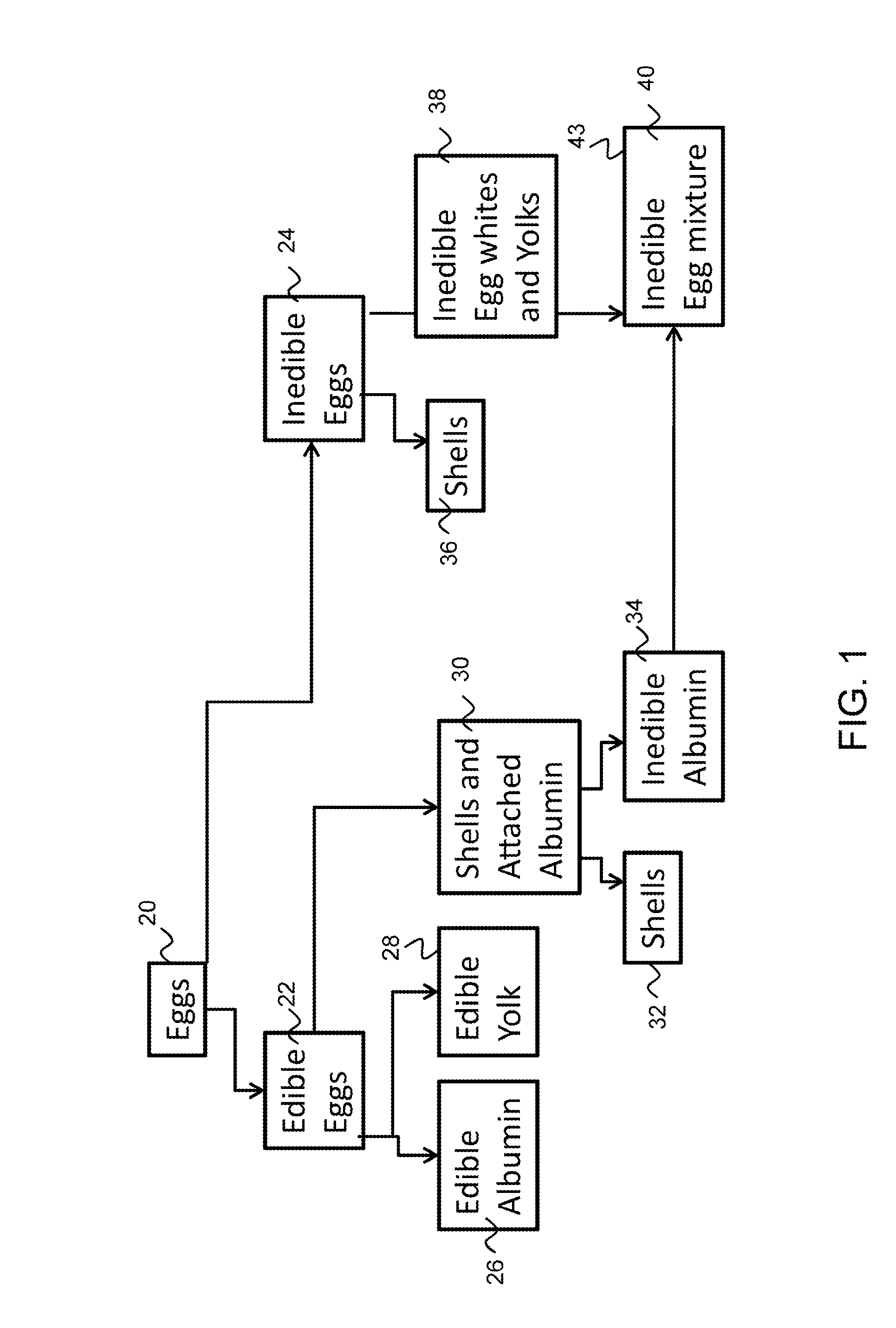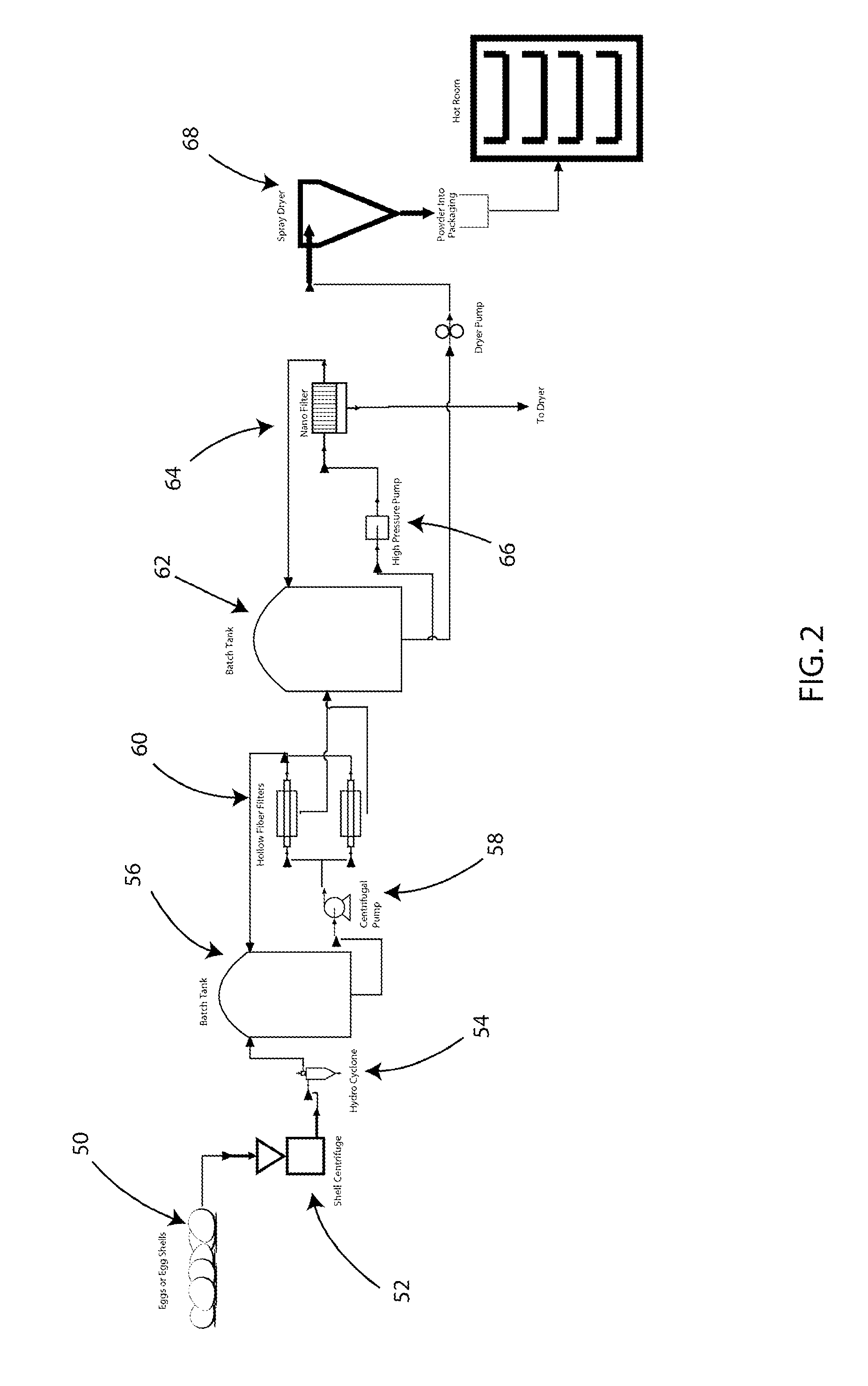Isolated egg protein and egg lipid materials, and methods for producing the same
a technology of egg yolk and lipid material, which is applied in the field of processing eggs, can solve the problems of insufficient physical separation of egg yolk and egg white, limited methods of separating egg components, and difficulty in detecting the presence of lipids in the egg yolk,
- Summary
- Abstract
- Description
- Claims
- Application Information
AI Technical Summary
Benefits of technology
Problems solved by technology
Method used
Image
Examples
Embodiment Construction
[0034]Whole egg components generally include an eggshell, two eggshell membranes, and an egg white and an egg yolk. The egg white makes up about two-thirds of the liquid weight of the egg, with the egg yolk making up approximately the remaining one-third. Both the egg white and the egg yolk contain nutritionally valuable components such as proteins and fats (also called lipids). The different egg components impart various “functional properties” to the egg. The term “functional properties” refers to the properties of eggs including, but not limited to, coagulation, foaming, emulsifying, and nutritional contribution.
[0035]The main components of the egg white (the albumen) include water (approx. 90% by weight) and solids (approx. 10% by weight) such as proteins, trace minerals, fatty material (less than 0.4%), vitamins and glucose, with protein making up the majority of the solids. In fact, the egg white contains approximately 40 different proteins. The predominant proteins in albumen...
PUM
| Property | Measurement | Unit |
|---|---|---|
| Fraction | aaaaa | aaaaa |
| Fraction | aaaaa | aaaaa |
| Fraction | aaaaa | aaaaa |
Abstract
Description
Claims
Application Information
 Login to View More
Login to View More - R&D
- Intellectual Property
- Life Sciences
- Materials
- Tech Scout
- Unparalleled Data Quality
- Higher Quality Content
- 60% Fewer Hallucinations
Browse by: Latest US Patents, China's latest patents, Technical Efficacy Thesaurus, Application Domain, Technology Topic, Popular Technical Reports.
© 2025 PatSnap. All rights reserved.Legal|Privacy policy|Modern Slavery Act Transparency Statement|Sitemap|About US| Contact US: help@patsnap.com


